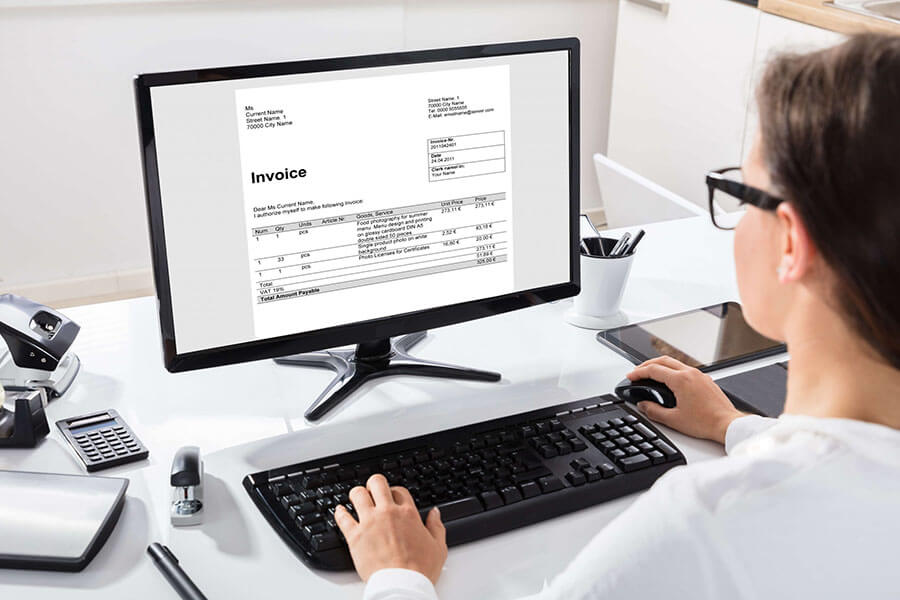Content

A bill is a document outlining the amount a customer owes for goods received or services rendered and is printed or written out as a statement of the charges. One difference between invoice and statement, AccountingTools says, is that a statement usually doesn’t discuss the details about shipping charges and individual items bought. It’s a polite reminder your customer still owes you some money and you’d like them to pay up. You should draft your bills and invoices in a way that suits your needs and requirements. If you are a freelancer, you should choose templates designed to present a services bill. Similarly, if you are a small business, you should look into a shipping or sales template to record your payment.
You send an invoice to your customer because you want them to pay you. When a business sends an invoice, a customer or client inputs the invoice information in Bills vs invoices the form of a bill in their general ledger. However, Bill.com’s A/P features far outshine the Bill Pay feature that comes standard with QuickBooks Online.
What’s the Difference Between an Invoice and a Bill?
For example, your utility bills or a bill received from a vendor are each classified as a business expense. On the other hand, an invoice count toward your business income. A bill makes the most sense for a business that expects its customers to make immediate payment for goods or services. Another https://www.bookstime.com/ key difference between an invoice and a bill relates to the level of information found in each document. While a bill might include only a general description of the transaction, an invoice must contain several key pieces of data. You want your customers to pay you, and as quickly as possible.

Bill and invoice management systems have evolved over the years. Advancements in technology have played a major role in this change. From manually writing down every invoice in spreadsheets to computer-generated invoices/bills, the world has changed drastically. The side of the transaction you’re on dictates if the document in your hand should be called an invoice or a bill. In most cases, the buyer reviews the total amount on the bill and makes the payment instantly. Discover what accounting automation is and the top 10 accounting automation software that you should try to optimize your accounting process.
Bill.com vs QuickBooks Online: Features
Thus an invoice is a document that synthesis all the required information. A bill goes to “accounts payable”, but is not suitable for bookkeeping. A bill is an invoice in that it has the itemized list of products sold or services provided, along with the amount of money owed for each item, and a total amount owed. However, when you receive an invoice, you would enter it as a bill that you owe. In other words, an invoice is sent, and a bill is received. A sales receipt is issued for the goods/services rendered right at the time of their purchase taking place. In other words, sales receipts are presented to customers after a “point of sale” purchase or in case the buyers make immediate payment.

Typically, Adobe says, you include payment terms such as due within 30 days or 10 percent discounted if they pay within two weeks. If you’ve completed a service, such as a $350 electrical repair, you’d present an invoice then, too. A bill refers to a document that details the amount owed by the customer for all the goods and services purchased by them.
Resources for YourGrowing Business
There are two XML-based standards currently being developed. Further implementations are underway in the Scandinavian countries as result of the North European Subset project. Implementations are also underway in Italy, Spain, and the Netherlands (UBL 2.0) and with the European Commission itself.
Restaurants, bars, and hotels might rely on a billing process, granting their customers access to a product or service and billing them once the sales transaction is complete. The total amount that the customer owes can be printed or written on the bill. Invoices are commercial documents businesses issue to their clients to request payment for work by outlining the service provided and detailing the amount of money owed for the work. On the contrary, QuickBooks Online comes at an advantage if you and your accounting team can handle billings without the need for automation. However, Bill.com’s OCR features are still superior to QBO because it can read handwritten receipts. One difference between an invoice and statement is that invoices go out with each shipment or service provided.
Invoice Vs. Receipt
Bills are often used in settings like hair salons and restaurants where payment is required immediately. However, when you receive a bill, you’re expected to pay the amount owed straight away. In other words, an invoice and a bill are classified as income and expenses, respectively.
- Bills are simple documents asking for quick or immediate payment.
- They both give us information about business transactions but they are used in different situations.
- In the Type list, select the type of transaction you are looking for.
- The terms “invoice” and “bill” have different meanings for buyers and sellers in the same transaction. 10X leads
- When the company you are working with uses purchase orders , include the P.O.
These incoming bills are handled as part of your broader accounts payable process. Accounts payable refers to the money you owe to others for goods and services. A quote provides the client with a fixed price for a project, whereas an estimate provides an estimate of the fees that will be incurred for a project, which could change.
How to Invoice Your Clients
Use a specific person’s name and department, whenever possible, along with the mailing or email address and a phone number. The United Nations standard for electronic invoices (“INVOIC”) includes standard codes for transmitting header information and codes for transmitting details for each of the line items . The “INVOIC” standard can also be used to transmit credit and debit memos. Debit memo – When a company fails to pay or short-pays an invoice, it is common practice to issue a debit memo for the balance and any late fees owed. It is a transaction you create to receive money from your customers. It also states the payment details mentioning the amount of the goods or services provided.
- The archaeological discovery of what amount to ancient Mesopotamian invoices — insignia sealed in clay — underscores the economic and utilitarian roots of writing and reckoning.
- You need to know when to issue an invoice and when to issue a bill.
- A business typically sends an invoice to a client or customer as a request for payment after it delivers a product or service.
- By contrast, a bill is the document received by a customer after receiving services or goods.
- For example, some business owners might expect their employees to submit a receipt if they require reimbursement for business expenses.
- Invoicing works well for buyers due to the credit offered and it’s profitable for sellers considering the opportunity cost and cash flow.
A statement is a monthly or quarterly report of how much the customer owes on all outstanding invoices. A bill, on the other hand, is a document that represents the transaction that the client has to make to pay for the goods and services bought. They serve as proof of purchase for the client and record the purchase in their personal record books.